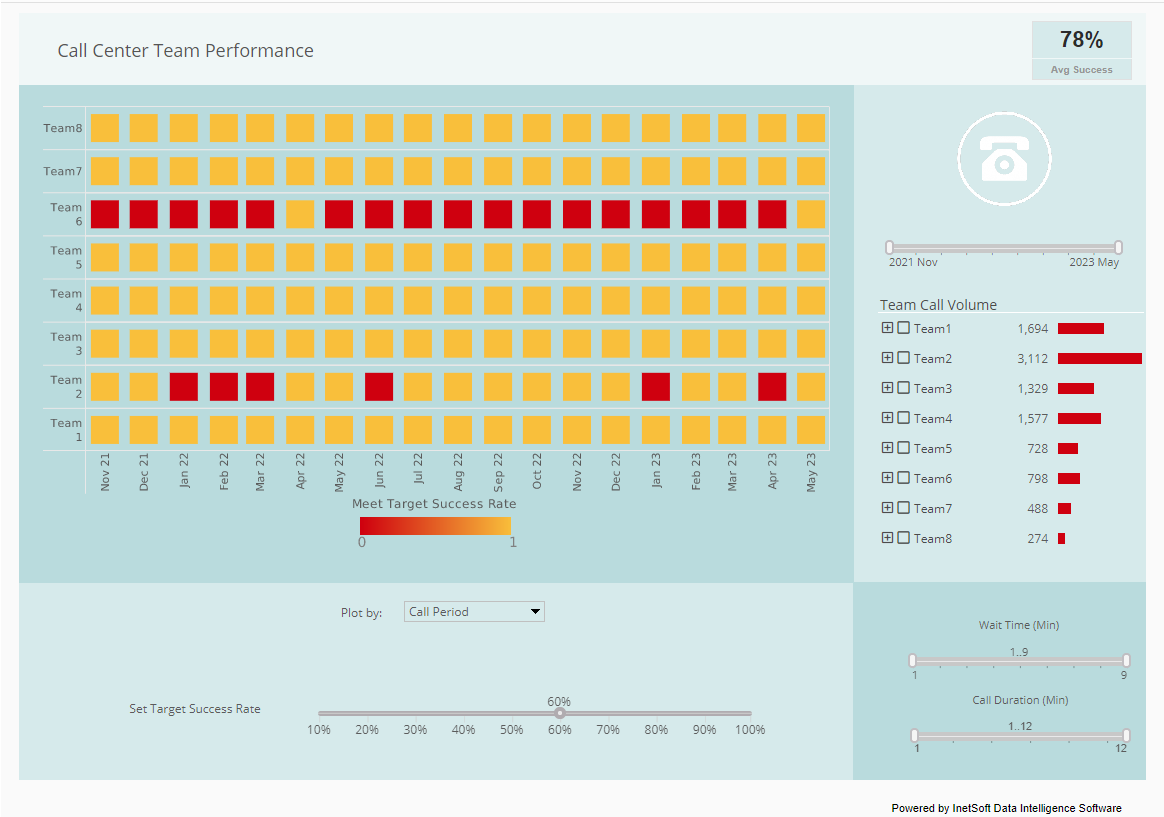Potential Problems with Data Mashups
Below is more from Information Management’s Webcast by DM Radio, “The Last Mile: Data Visualization in a Mashed-Up”. This Webcast was hosted by Eric Kavanagh and included BI consultants William Laurent and Malcolm Chisholm, and InetSoft's Product Manager Abhi Gupta.
Eric Kavanagh (EK): Let’s talk some more about mashups. William, what would you say about the potential problems with mashups?
William Laurent (WL): If we’re talking about weakness about mashups, one weakness is that I have seen in the publishing capabilities of a mashup or a mashup product. How do we go from conveying this wonderful set of information on the person’s computer screen, which is essentially a 3D world view to producing that as a hardcopy.
There’s no click-through capabilities. You’re going to lose a certain amount of information. I think that really is, from what I’ve seen, is a challenge for the actual developer to take that information that we have in mashup form and incorporate that into the hardcopy world.
EK: And Malcolm, what are your thoughts about all that?
Malcolm Chisholm (MC): Well, my thoughts are around the semantic challenges. You have some users who sit in very narrow silos and understand a little bit of data, but with a mashup obviously you are bring together disparate data and creating a whole picture,
| #1 Ranking: Read how InetSoft was rated #1 for user adoption in G2's user survey-based index | Read More |
and you have other users who sit at a much higher level and see it more broadly but don’t understand all the nuances that are in there. So how do we address this semantic challenge of understanding the data that we are bringing together sufficiently so there are no issues about interpretation when the mashup is rendered to them.
EK: Yeah, and that’s a very interesting point, Malcolm. Is the relationship causal? Is it related? Is it merely a fluke that the way you are looking at these things, they seem related? That is definitely an issue, but that is not just limited to mashups. It’s limited to ten years ago when folks were doing multidimensional analysis on OLAP cubes. They slice and dice. If they see a pattern, is it? Is it causal? Is it correlated? Is it not? That’s almost a separate issue all together. How to visualize the data and then accurately communicate with users.
MC: I agree that it is a very old issue, but it will just reappear in a different form. It is still something that we have to face somehow. Going back to the earlier discussion, maybe there’s something we can do with that which will make it easier for data mashups.
EK: Abhi, how does InetSoft's solution overcome the problems associated with data silos?
AG: InetSoft's solutions effectively address the challenges associated with data silos, which are isolated data storage systems that can hinder comprehensive data analysis and decision-making. One of the primary ways InetSoft overcomes this problem is through its robust data integration capabilities. InetSoft's platform allows organizations to connect and integrate data from a wide variety of sources, including databases, cloud services, and on-premises systems. By facilitating seamless data integration, InetSoft ensures that data is no longer trapped in isolated silos but is instead accessible in a unified, cohesive manner. This integration enables organizations to obtain a holistic view of their data, leading to more informed and strategic decision-making.
Another significant aspect of InetSoft's solution is its emphasis on real-time data access and updating. Traditional data silos often suffer from outdated information, making timely decision-making difficult. InetSoft's real-time data processing capabilities ensure that the integrated data is always current. This is particularly important for businesses that rely on up-to-the-minute information to respond to market changes, customer needs, or operational issues. With real-time data integration, InetSoft empowers organizations to act quickly and effectively, leveraging the most recent data available.
In addition to data integration and real-time access, InetSoft enhances data accessibility and usability through its powerful visualization and reporting tools. Data silos often lead to fragmented and inaccessible data, but InetSoft's user-friendly dashboards and interactive reports make it easy for users across the organization to access and interpret data. These visual tools allow users to create customized views of the data, uncovering insights that might be hidden in isolated datasets. By transforming raw data into actionable intelligence, InetSoft helps organizations break down the barriers created by data silos and fosters a culture of data-driven decision-making.
Security and data governance are also critical areas where InetSoft's solutions excel. Data silos can pose significant risks to data security and compliance, as fragmented data storage makes it challenging to enforce consistent security policies. InetSoft addresses these issues by providing centralized control over data access and security protocols. With its comprehensive data governance features, InetSoft ensures that data is managed according to organizational policies and regulatory requirements. This centralized approach not only enhances data security but also improves compliance, reducing the risk of data breaches and legal issues.
Finally, InetSoft's scalability and flexibility make it a robust solution for organizations of all sizes and industries. Data silos often result from the growth and diversification of data sources within an organization. InetSoft's platform is designed to scale with the organization's needs, accommodating increasing data volumes and evolving data sources without compromising performance. This flexibility ensures that as organizations grow and their data environments become more complex, they can continue to integrate and utilize their data effectively. By providing a scalable and adaptable solution, InetSoft helps organizations overcome the challenges of data silos and leverage their data assets to drive business success.
| Previous: How Data Mashups Work |

